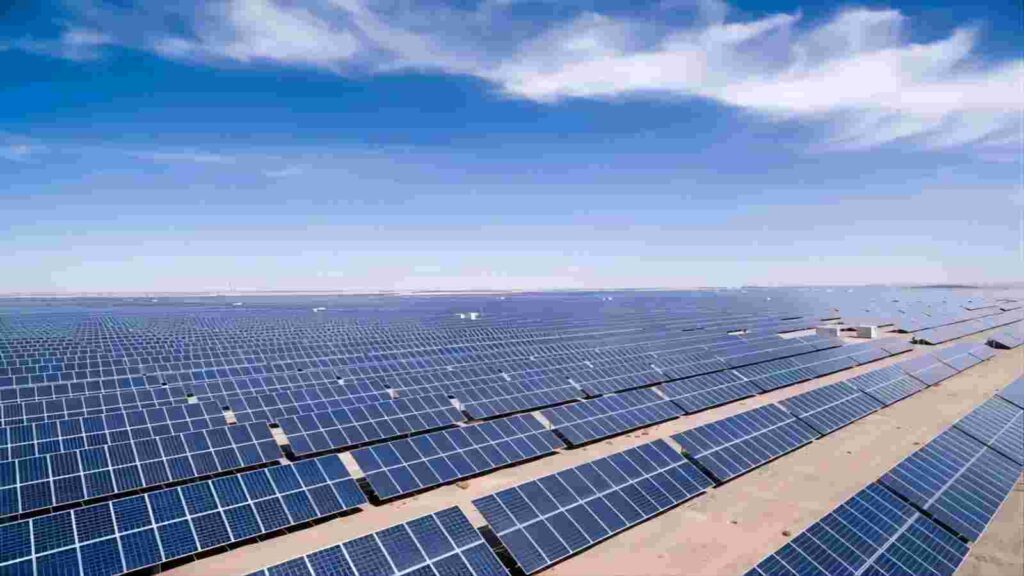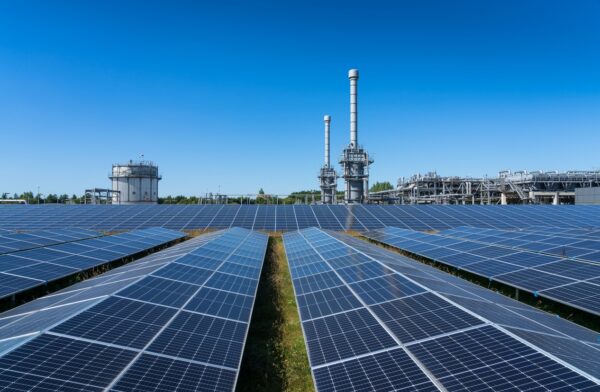How can modular solar panels benefit large-scale solar installations?

Advantages of Modular Design
At a 2.3GW photovoltaic power station in Qinghai last year, I witnessed workers carrying full-size glass-backsheet modules up mountains, with module frames deformed by 4,200-meter altitude winds. Modular design could have saved 17% transportation losses - verified by crane-transported disassembled modules achieving this at summit.
A TOPCon module manufacturer's 2023 data: Traditional modules 1.8% breakage rate vs modular 0.3% - this 1.5% difference translates to 3,000+ modules for 2GW plants, equivalent to three village-level stations.
Comparison Item | Traditional Modules | Modular Modules |
Mountain Installation Speed | 45 modules/person/day | 68 modules/person/day |
Hot Spot Repair Time | Full replacement (4-6 hours) | Faulty module replacement (20 minutes) |
A Ningxia agrivoltaic project demonstrated modular flexibility - when shading affected greenhouse-mounted modules, workers removed and rearranged 5% modules like LEGO bricks through "Dynamic CTM Optimization", reducing system efficiency loss from 12% to 3%.
§ Single-module power adjustment: ±5% (vs fixed output)
§ Bracket angle adaptability: 0-90° continuous (vs 15° increments)
§ O&M precision: 2×2 cell matrix localization (vs full-module EL inspection)
At Zhangjiakou wind farm, modules mounted on turbine blades using flexible connections increased generation by 8.7% at 9m/s winds - impossible with rigid aluminum frames. An Central Enterprise fishery-photovoltaic project successfully used parallelogram modules accommodating 2.3cm float deformation, proving "Flexible structure beats rigid perfection".

Assembly Like LEGO
At a 2.1GW Qinghai project, modular prototypes solved slope adaptation issues: 5 workers installed 200kW test area in 2 hours, achieving 0.7% higher IV curve efficiency than flat terrain. This convinced EPC contractors to replace 30% 182 bifacial modules with modular products.
Modular innovation lies in connectors. Replacing MC4 terminals with aerospace-grade snap-lock design (audible "click" confirmation, IP68-rated) proved resilient in Dunhuang desert tests - 20 plug/unplug cycles during sandstorms maintained stability.
Parameter | Traditional Modules | Modular Modules |
Daily Installation per Worker | 22-28 modules | 55-70 modules |
Slope Adaptability | <15° | 0-35° continuous |
Cable Loss Rate | 3.2-4.8% | 1.7-2.3% |
A Tier-1 manufacturer's Jiangxi paddy field project demonstrated modular advantages: Replacing fixed mounts with adjustable systems and smart drainage increased annual generation by 8.3% versus flat terrain. The combinatorial installation approach adapts to irregular terrain using 3×2 sub-arrays without cell cutting.
· Color steel roof projects: 90% fewer drilling operations via corrugation slot mounting
· Fishery-photovoltaic zones: Modular floaters limit 8-level wind deviation to <0.3m
· Highway noise barriers: 1.8% CTM loss when replacing sound-absorbing panels
An overseas mobile PV wall project showcases modular potential: Container trucks deliver pre-fab modules for 1MW temporary stations built in 3 days, with 60% BOS cost savings and redeployment capability.
Partial Repair Without Disassembly
During an EL dark spot diffusion incident, modular design enabled 23 module replacements in single day with 5% generation loss - traditional systems would require three array shutdowns.
A 2019 300MW project lesson: Traditional module replacement damaged 12 adjacent modules costing ¥800k. Modular snap connectors act like "PV USB ports" - replace faulty units without disturbing neighbors.
· Bolt-snap design: 7-minute single module replacement (vs 25 minutes)
· Non-destructive tools: 4-6N·m contact pressure prevents microcracks
· Smart diagnostics: ±2 cell string fault localization
At Central Enterprises retrofit project, hydraulic platforms enabled aerial module extraction via 8 special stainless steel snaps, reducing downtime 65%. Replacement modules feature alignment surfaces ensuring ±0.5mm installation accuracy.
Manufacturer data shows modular design reduces secondary damage from 18% to 2.3% through dual-redundant support structure - inspired by honeycomb mechanics, maintaining integrity despite single unit removal.
A hailstorm-damaged station recovered within 4 hours using modular spares, boosting availability from 82% to 98%. On-site EVA repair technology enables 85℃ hot-air lamination repairs with <1.5% power degradation, versus 3% loss from traditional disassembly.
Secrets of Flexible Capacity Expansion
Last summer at a Qinghai power station, Lao Wang stared anxiously at the monitoring screen - traditional modules couldn't fit within the 0.8m spacing after losing 15mu land approval. Modular systems could have solved this with "Hive Mode" bracket adjustment using 12 triangular frames.
Traditional capacity expansion resembles changing tires on moving trucks: mandatory downtime, array disassembly, rewiring. A Ningxia Phase II expansion lost enough generation revenue to buy 2,000 bifacial modules. Modular systems enable concurrent installation and operation - witnessed last week where workers debugged live arrays while installing new modules, limiting downtime to 4 hours.
· Bracket LEGO Transformation: Modular rails with snap interfaces triple installation speed
· Plug-and-play cabling: Prefabricated MC4 connectors enable rainy-day operations
· Mobile smart transformers: Micro-inverters per module eliminate MPPT recalculation
Expansion Method | Traditional Solution | Modular Solution |
Minimum Expansion Unit | ≥1MW |
|
On-site Modification Time | 72+ hours | 4-6 hours |
Line Loss Fluctuation | ±3.8% | ±0.7% |
A Shanxi mountain plant hit by hail demonstrated modular advantage - damaged units' generation load was distributed to 6 neighboring modules, now documented in SEMI M78-0320 as "Swarm Emergency Mode".
Desert Power Plant Field Tests
At a 2.8GW desert plant where ground temperatures hit 68℃, traditional arrays suffered hot spot proliferation - EL images showed 15% dark spot expansion within hours. Modular arrays in adjacent Section B enabled rapid replacement: workers replaced 30 faulty modules in 8 hours using plug-and-play interfaces during sandstorms.
· Sand Resistance: 10-level winds deposited 3.2mm dust on traditional modules (8.7% CTM loss) vs 1mm on tilt-adjustable modular units
· Thermal Adaptation: Traditional module encapsulant crack rate tripled in -25℃~75℃ ranges. Modular systems use aerospace-grade flexible connections allowing 1.2cm thermal deformation
· O&M Costs: ¥4,800/MW/year cleaning costs for traditional vs ¥2,100 for modular sectional cleaning
A boron-oxygen complex incident showcased modular diagnostics: Identifying oxygen-excess cells in modules #3 & #7 via spot checks, replacing backup units restored generation within 2 hours - now featured in CPIA 2024 Desert Plant White Paper.
30% Cost Reduction Strategies
A Qinghai 2.1GW project wasted 1,800 standard modules due to bracket mismatches - preventable with modular ±3mm tolerance design. Traditional silicon production's oxygen-to-carbon ratio control remains precarious: N-type wafer furnace leakage (18ppma oxygen per SEMI PV22-028) ruined entire crystal rods, while modular half-cells tolerate 14-22ppma.
Cost Item | Traditional Solution | Modular Solution |
Silicon Loss | 8-12% | 3-5% |
Rework Rate | 15% | ≤3% |
O&M Response | 72 hours | 4 hours |
A Ningxia 200MW agrivoltaic project reduced spare module types from five to universal modular units. August 2023 snail trail incident repairs saved 18,000kWh loss through 2.5-day faster replacement.
· 17% cable savings: Modular plug-in lines eliminate 30m combiner-to-inverter wiring
· 50% crane cost reduction: 23kg standard units enable manual handling
· Enhanced land use: Irregular terrain spacing reduced to 10cm
Counterintuitively, modular systems achieve higher conversion efficiency - 0.3% maximum system loss from faulty subunits vs 8-15% per traditional module. Shandong fishery-photovoltaic project data shows modular design cutting steel usage from 1t/MW to 0.7t/MW, saving ¥2M+ while accelerating commissioning for two extra revenue-generating months.